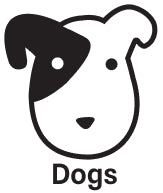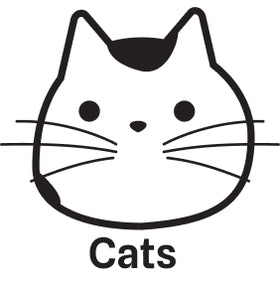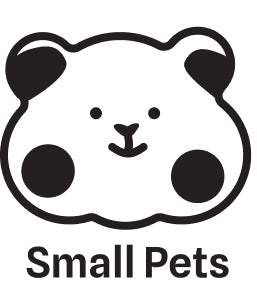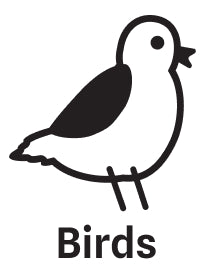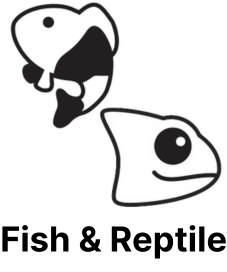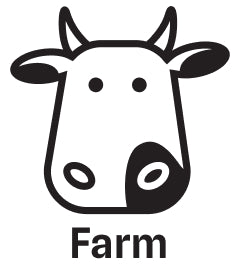
When you walk into any pet shop or supermarket, you will come face to face with a whole aisle full of dog food. From dry to wet food and in many different forms including puppy, adult, senior and much more.
There are so many different brands and types, the choice can sometimes be overwhelming.
But what is the common nutritional disease?
Obesity is the most common nutritional disease in England, with an estimated half of all dogs (and cats) in the United Kingdom considered to be above their ideal weight.
Obesity is an extremely common and preventable problem affecting our pets, with more and more cases seen every year.
Just like us, feeding your dog a balanced diet with the right amount of nutrients is the key to a happy lifestyle, so it is best to stick to a reliable dog food that includes everything a dog needs to stay fit and healthy.
Commercial pet food for dogs is classified as either complete or complementary:
- Complete foods provide all the necessary nutrients in the right balance so that no other food needs to be added
- Complementary foods must be combined with other foods to provide a complete balance of nutrients
Whichever food you choose, remember dogs always need fresh water, which should be changed daily.
What is obesity in dogs?
Obesity is when our dogs have excessive fat in the adipose storage areas of the body and involves an increased mass of body fat produced either by an enlargement of fat cell size alone (hypertrophic obesity) or by an increase in both fat cell size and fat cell number (hyperplastic obesity).
Obesity is caused by an imbalance between the intake of food and what energy the dog uses - as excess energy is stored as fat, which is laid down in the body tissue, resulting in weight gain, which leads to obesity.
Obesity is when dogs are 15% over their ideal body weight.
Any excess body fat is not good for the dog’s quality of life and being overweight can affect their overall health. Overweight dogs are at greater risk of developing more serious conditions such as heart disease, joint disease, and the development of diabetes.
It is worth remembering that some medical conditions in dogs can cause weight gain. Should your customer notice that their pet has gained weight (or lost weight) then they should be strongly advised to seek medical advice, this is to ensure no underlying issues.
However, most the common cause for weight gain is too much food.
Is feeding too much the only reason why my dog is overweight?
Feeding your dog too much is not the only reason why your dog could be gaining weight.
There are other reasons WHY some dogs will naturally gain weight. These include the breed of the dog (some dogs are more prone to weight gain), age of the dog (some older dogs are less active), sex of the animal, and neutered dogs will require a deduction in calories due to energy needs.
The lifestyle of the dog also has an influence; those which are inactive will also become obese.
What do Petsmagnet recommend for weight control?
Firstly, we would recommend that you seek veterinary advice to make sure there is no medical reason why your dog is gaining weight. If all seems well, then we would recommend the following:
Exercise: Obesity can be managed through increased exercise; this should be increased gradually so you don’t overdo it.
Diet: Providing the dog with a healthy diet is also key to keep their weight under control. Serving less treats and human food is a good starting point. We are dog owners ourselves and we know we like to treat our dogs! However, if we are going to share treats with our dogs then ensure it remains a treat, as overtime it will become an expected and regular source of extra calories.
Prescription Diets: A low-fat, low-calorie diet is another option for ensuring that your dog will still receive a balanced diet while losing weight
What diets are good for weight control?
Royal Canin have specifically designed a food called Canine Satiety Weight Management (wet and dry food) which they have formulated with the nutritional needs of an overweight dog. It has been formulated to help support the nutritional needs and to support safe weight loss in dogs. This diet has also been designed to help your dog maintain muscle mass while losing weight safely. Other important factors include:
- Nutritional profile that helps keep dogs satisfied between meals
- High protein content helps support healthy weight loss while maintaining muscle mass.
- An adapted macronutrient profile helps provide safe weight loss and avoid weight regain.
Purina Pro Plan Veterinary Diets Dog OM (Obesity Management) Dry has also been formulated to provide a balanced nutrition for safe and effective weight loss and has been formulated for dogs to achieve the following:
- Low fat
- Low calorie
- High protein to help maintain lean body mass
- Optimal level of natural fibre helps dogs feel full
- These high levels of fibre can also be helpful in managing blood glucose fluctuations in diabetic dogs but seek veterinary advice for more information.
What is the dog body condition score?
Dog body condition scoring allows you to assess the amount of fat your dog is carrying.
It is straightforward to do at home and can identify problems in overweight dogs before the use of scales show a big change.
Body condition scoring for your dog is simple. It uses a scale of one to nine, with one meaning ‘very underweight’ and nine meaning ‘very overweight’.
A dog body condition score between four and five is considered ideal – not too big and not too small, which is where you should aim to get your dog. You can work out your dog’s current body condition by:
Rib Check:
Get your dog comfortable and run both of your palms across their ribcage, one hand on either side. If you can not feel your dog’s ribs, they can be potentially carrying a bit too much weight!
Profile Check:
View your standing dog from a side-on angle. It is best if you are level with your pet, so you get the most accurate view to see the body.
Overhead Check:
Look down at your standing dog from an overhead angle. If your dog does not have a waist, they may be carrying too much weight.
How to find out your dog’s body condition score?
Your dog is too thin if you can see the ribs, spine, and the pelvic bones. This means that they will have no body fat and an obvious loss of muscle mass.
Your dog's ribs, spine and pelvic bones are easily visible. They’ll have no palpable fat but only minimal loss of muscle mass.
You have an underweight dog if their ribs are easily felt and may be visible, with no palpable fat covering them with the top of the spine being visible.
Your dog’s body score is ideal if:
You should be able to feel their ribs without too much of a fat covering. Their waist should be easily visible from above (look for an hour-glass shape) and their abdomen (the part of their underside just in front of their hind legs) should be tucked up towards their pelvis when viewed from one side.
Your dog is overweight if:
You find it difficult to feel their ribs because a heavy fat covering is in the way. There are noticeable fat deposits over their lumbar area and the base of their tail. Your dog’s waist is absent or barely visible and their abdominal tuck may or may not be present.
Your dog's ribs are not palpable under a very heavy fat cover, or palpable only if you apply significant pressure. There are heavy fat deposits over lumbar area and base of their tail. Their waist is absent, with no abdominal tuck. You may notice that there tummy is large and hangs down a little.
They have massive fat deposits over their chest, spine and the base of their tail. Their waist and abdominal tuck is absent, and they have fat deposits on their neck and limbs. There is obvious abdominal distention (their belly hangs).
What happens when we reach our weight loss goal with our dog?
Once an ideal body weight and condition has been achieved, your dog must maintain that weight.
Veterinary advice should be obtained first to help you find a maintenance diet that is appropriate for your dog and appropriate portions for weight maintenance.
Portion control is important at this stage to prevent regaining weight. After so much hard work, a relapse in obesity would be disappointing.
If you are thinking of amending your dog’s diet, firstly talk to your vet before making any changes to the dog’s food.
If you would like more information on your dog’s nutritional needs, from regular dog food to feed that is lower in calories, here at Petsmagnet we are happy to discuss with you the wide range of feeds for all dogs.

